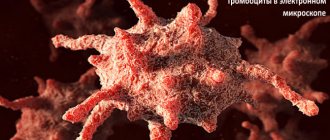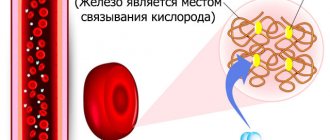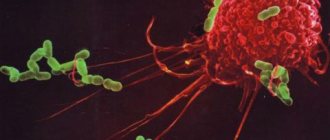About a quarter of Russians are overweight. More than 18 million people worldwide die from cardiovascular diseases. At least 2 million people have diabetes. The common cause of all these ailments is high cholesterol, which affects about 147 million people around the world.
In Russia, the USA, Canada and Australia, more than 60% of the population faces this. The problem has already been called a “national catastrophe”, but, unfortunately, not everyone takes it seriously. How to prevent severe vascular disorders?
The most current and up-to-date information about cholesterol.
Cholesterol: myths and reality
Most uninitiated people imagine this substance as fat, but doctors say that cholesterol is a natural alcohol. When frozen, it looks like salt crystals. A fat-soluble substance of organic origin accumulates in the cells of organs and systems.
The body really needs cholesterol, since the membrane of our cells consists of it. Therefore, no matter what we eat, the body will produce it and distribute it to create new cells and restore the membrane of old ones.
The main purpose of cholesterol compounds is to insulate nerve tissue and protect the cell membrane. Cholesterol promotes the production of hormones by the adrenal glands and sex glands. 80% of the substance is produced by it itself, the rest enters the body with the products we eat.
There are two types of cholesterol; in everyday life they are called “good” and “bad”. The substance itself is homogeneous and has neutral characteristics.
And the usefulness of the substance depends on how cholesterol is transported, what substances pick it up, and which lipoproteins it interacts with. It contains about 200 g in organs, mainly in nerve tissues and the brain.
The first type is represented by high-density lipoproteins, which prevent contamination of blood vessels with foreign deposits. “Bad cholesterol” refers to low-density lipoproteins that can settle in the vascular bed and create health problems.
There is also a type of very low density lipoprotein. Increased bad cholesterol in the blood, what does this mean? Once formed, a plaque does not disappear from the body. By clogging the arteries, it prevents the passage of blood and oxygen to the internal organs.
Gradually, the lumens of blood vessels narrow, and atherosclerosis is often diagnosed at a young age.
A life-threatening plaque is a plaque that turns into a paste of calcium and clogs the vascular bed by 75%. Only “bad” cholesterol creates these problems, although its properties are often attributed to cholesterol in general.
More about cholesterol
In its composition, cholesterol is a chemical substance that is synthesized in large quantities by the liver and ensures the normal functioning of the entire body. The very name “cholesterol” translated from Greek means “chole” - bile and “stereos” - hard, hard.
According to the chemical nomenclature, this substance belongs to alcohols, so it would be correct to call it cholesterol. At its core, it is a fat-like substance, the main place of formation of which is the liver. Cholesterol is present in the plasma membrane (outer layer) of every cell unit in the human body and has many functions.
Cholic acids are formed from it, ensuring the absorption of fats in the small intestine (the function of producing bile). Without cholesterol, adequate activity of the adrenal glands and the production of sex hormones is not possible.
In addition, it not only serves as an integral auxiliary component in the synthesis of bile, participates in the production of vitamin D by the skin, the metabolism of fat-soluble vitamins such as A, D, E, K, but also acts as a sheath for nerve fibers.
Cholesterol is carried through the bloodstream by molecules of special substances - lipoproteins. The latter are a chemical compound or complex consisting of protein and lipids (fats), hence their name. There are several main types of lipoproteins.
Low-density lipoproteins (LDL)
Such compounds belong to the so-called “bad” cholesterol. They transport it from the liver cells to the rest of the tissue structures of the body. These substances can increase the risk of cardiovascular diseases because they easily penetrate through the vascular walls and are retained in them.
As a result, excess cholesterol is deposited on the walls, which leads to the formation of atherosclerotic plaques. Most people's blood contains about 70% LDL, but fluctuations in this indicator are also observed.
High density lipoproteins (HDL)
This organic substance is the so-called “good” cholesterol. According to scientists, HDL, unlike the previous type, can prevent the development of cardiovascular pathologies.
They perform the opposite function of LDL, namely, they transport cholesterol from tissues back to the liver. There it is broken down and subsequently excreted from the body as metabolic waste.
Triglycerides
These are the chemical forms of existence of most of the body's fats. They are found in blood serum. In combination with cholesterol, triglycerides form blood fats (or plasma lipids). They enter the serum either with fats contained in food, or are synthesized from other energy sources, for example, carbohydrates.
The calories that a person consumes are not used by the body immediately after intake, but are converted into triglycerides in the tissues and then stored in fat cells. When the body is in need of energy resources and no food is supplied, triglycerides are released from fat cells and replenish the missing reserves.
Functions of cholesterol
Why do we need cholesterol?
If cholesterol is within normal limits, it only has a positive effect on the body. In addition to creating a cell membrane that protects it from an aggressive environment, it also performs many other functions:
- Plays the role of a filter that recognizes molecules that need to be allowed into the cell and those whose access needs to be blocked;
- Controls the level of carbon crystallization;
- Serves as a stimulating substance in the production of bile acids;
- Helps synthesize vitamin D, which is essential for normal skin condition, using solar energy;
- Its optimal level improves metabolism, including fat-soluble vitamins;
- As part of the myelin sheath, it covers nerve endings;
- Normalizes hormonal levels (testosterone contains 50% cholesterol);
- Responsible for the degree of membrane survival;
- Protects red blood cells from the aggressive effects of hemolytic toxins;
- Helps the liver synthesize fatty acids necessary for processing fats;
- Activates serotonin receptors, eliminating depression.
But the body needs a tiny fraction of the cholesterol produced. Excess amounts pose a fatal risk to the heart.
Signs in men
Symptoms of high cholesterol in men are mainly reflected in the functioning of the heart, as well as other organs and systems suffering from insufficient blood circulation:
- worsening of existing chronic diseases;
- cerebrovascular accident, manifested by fatigue, memory loss, frequent headaches or dizziness;
- impaired oxygenation (oxygen saturation) of the heart, progressing to coronary artery disease;
- pain in the legs, poor exercise tolerance;
- shortness of breath (also associated with deterioration of blood supply to the heart).
Deterioration of erection and impotence may be indirect signs of systemic atherosclerosis.
Reasons for the increase in “bad” cholesterol – who is at risk?
The main prerequisite that contributes to the accumulation of excess cholesterol is an unbalanced diet, when an excess amount of fat enters the body (margarine (spread), mayonnaise, butter, fatty meat, crabs, shrimp, baked goods, high-fat fermented milk products).
By the way, the amount of cholesterol in lard is lower than in butter. According to nutritionists, you should consume 1g of fat per 1 kg of body weight per day.
Provoke an increase in “bad” cholesterol:
- Alcohol and smoking abuse, which have a toxic effect on the liver, where cholesterol is synthesized;
- Cardiac pathologies in the form of heart attack and angina;
- Diabetes mellitus – high blood glucose levels are an additional provoking factor for the production of “bad” cholesterol;
- Kidney failure;
- Extrahepatic jaundice;
- Hepatitis and cirrhosis of the liver;
- Pregnancy;
- Lack of growth hormone;
- Uncontrolled use of a group of drugs disrupts the metabolic balance;
- Frequent stressful situations increase the production of the hormone cortisol in the blood, which destroys protein tissue and increases the level of glucose in the blood;
- Excess body weight.
Men with large bellies are also at risk. Fat envelops internal organs, disrupting their function, increases intra-abdominal pressure, and negatively affects the function of the liver, which synthesizes cholesterol. This list also includes women during menopause, who have reduced reproductive function and the synthesis of female sex hormones.
Fans of low-fat diets are also at risk. Why do people need cholesterol when losing weight, and why should it come from food? When 20% of the required cholesterol does not come from food, the body begins to produce more of it.
Concentration camp prisoners had constantly high levels of cholesterol in their blood. In addition to the stressful situation, the cause was constant malnutrition with a complete lack of fat in the diet.
Other causes also influence the production of high cholesterol: hormonal medications, oral contraceptives, diuretics and beta-blockers. Age will also be a risk factor, since over time the normal functioning of the body becomes more difficult.
High cholesterol - what should be done, how to treat?
This question will best be answered by a qualified medical professional, as a rule, after passing tests and a careful examination / survey / study of concomitant diseases. Usually the first person to inform a patient about the problem of high cholesterol in the blood is the local physician. Further, depending on the circumstances, he may refer you to other specialists (you will find a detailed list of them HERE
). For example, to an endocrinologist or gastroenterologist, but most often - directly to a cardiologist.
Consultation with a doctor
Drug treatment
– most often applicable in severe cases. In order to know exactly how to treat high cholesterol in a woman or man, it is necessary to find out the root cause (identify the root of the problem, do not endlessly pick the “berries”). To begin with (even with a “slightly” advanced form), the doctor will advise you:
- Follow a diet.
On our website you can familiarize yourself (via links) with the main nuances of a diet for lowering cholesterol (according to the recommendations of nutritionists)
.
And also on other pages to find out: which products reduce cholesterol in the blood (the best of the best) , and which (on the contrary) catastrophically increase
it (and spoil health in general).
- Physical exercise.
Individually according to age and physiological characteristics of the body. For young women, the optimal solution would be morning jogging, for the older generation - a swimming pool, for older people - mandatory walks in the fresh air (every day, at least an hour, at least five kilometers, preferably in the park).
- Rejection of bad habits.
Unfortunately, many modern women smoke and love good wines.
- Prescribe medications.
As stated above, only under dire/serious circumstances. Usually these are STATINS
(a special group of drugs that block the work of a special enzyme responsible for the production of cholesterol in the liver). Or inhibitors - preventing the absorption of lipids in the intestine.
Strict adherence to the new rules of life
- Create a new menu.
To understand what exactly should be included in it and what needs to be excluded, you can find out by following the links:
- WHAT YOU CAN EAT AND WHAT YOU CAN’T EAT WITH HIGH CHOLESTEROL
- (FULL) TABLE OF CHOLESTEROL IN FOOD
- HOW TO QUICKLY REDUCE CHOLESTEROL IN THE BLOOD OF WOMEN
You will have to give up some of the “joys of life” (fried foods) forever in order to extend your life. And this is quite serious! Avoid other foods temporarily until the high level of cholesterol in the blood drops to normal.
- Change your daily routine.
Include physical exercise, walks in the fresh air, join a fitness club, swimming pool, and get a garden/dacha. It all depends on age. Modern scientists have found that even good music (mostly classical) can also lower cholesterol levels.
You need to start this business “not on Monday” or “tomorrow”, but right now!
Regular examination
LIPIDOGRAM - at least once every 5-6 years.
.
This event is especially important for people suffering from hypertension, diabetes, and cardiovascular diseases. And also a must for women who are overweight ( check your BMI
), smokers and lead a sedentary lifestyle (after all, women’s work is mostly sedentary). At the slightest deviation from the norm, you should immediately consult a doctor!
VIDEO:
how are cholesterol (atherosclerotic) plaques formed in the walls of blood vessels (43 sec)?
Blood cholesterol level
In healthy people, cholesterol levels are quite high: normal levels do not exceed 1.0 mmol/l. A deficiency will create additional problems for the body.
The cholesterol limit for healthy people does not exceed 3.5 mmol/l.
In hypertensive patients and diabetics, this figure should be less than 2 mmol/l. Exceeding this norm can provoke the development of atherosclerosis. For total cholesterol, normal values should not exceed 5.2 mmol/l.
In addition to quantitative parameters, the qualitative composition of cholesterol is also assessed: the proportions of its different fractions - LDL, HDL, TG. In healthy people, atherogenic cholesterol (LDL) is in the range of 100 - 130 mg/l (in hypertensive patients - 70 - 90 mg/l).
The most accessible way to determine your concentration of all types of cholesterol, which can be done in any clinic, is a blood test called a “lipid profile.”
Healthy people over 35 years old need to monitor whether their indicators are within the normal range at least once every 2 years. Patients at risk, as well as those who have (or have had) patients with vascular pathologies in their family, should be examined annually.
Why is it also recommended to consult a doctor if the readings are below 3.5 mmol/l? See the answer in the program “Quality of Life: About the Most Important Thing”
What to do if low-density cholesterol is high?
With elevated LDL cholesterol, total cholesterol levels also rise. If total cholesterol is elevated to 8 or 9 mmol/l, a person begins to worry about what to do. First, do a lipid profile to find out which fraction provoked the excess of the norm. If low molecular weight cholesterol is elevated, it is necessary to find and eliminate the cause of this disorder.
Treatment may require both medicinal and non-medicinal methods. Your doctor will help you choose the optimal therapeutic regimen.
Symptoms of High Cholesterol
Doctors call cholesterol “the gentle killer” because the desire to eat a cake or ham does not provoke pain, like a bad tooth. The accumulation of harmful substances is often asymptomatic.
When cholesterol concentrations increase, atherosclerotic plaques form in the body, which lead to cardiovascular and other health problems.
A number of nonspecific signs indicate elevated cholesterol in the blood:
- Cardiac pathologies. Coronary artery disease is a consequence of narrowing of the coronary arteries;
- The appearance of clots with significant bleeding;
- Chest and joint pain;
- Fat granulomas are painful inflammation of the skin;
- Yellow spots of fat on the skin under the eyes, small fatty spots in the corners of the eyes;
- Pain and heaviness in the legs even with minor exertion.
These are just the main signs, if identified, you need to undergo an examination. Signs of the disease often appear only when cholesterol levels have already reached critical levels.
Why is promotion dangerous?
High cholesterol levels can make it an enemy to human health. First of all, it is dangerous because it causes disorders of the cardiovascular system, which subsequently often cause serious illnesses and even death of patients.
Cholesterol deposits on the vascular walls gradually lead to a decrease in their lumen and, as a result, to blockage (stenosis). Due to the narrowing of the arterial lumen, the quality of delivery of oxygen and essential nutrients to the organ or tissue area that should be supplied by the affected vessel decreases.
If such a disorder occurs in the heart, then its consequence is angina pectoris and/or myocardial infarction, if in the brain, then there is a high probability of developing an ischemic stroke. In the case of such damage to the arteries of the legs, a person will begin to experience pain in the lower extremities, and he may lose the ability to walk.
In addition, in these situations, arterial thrombosis is possible, which is also a very dangerous disease. Therefore, it is necessary to know the manifestations of high cholesterol levels in order to seek help from a specialist as early as possible.
Where is blood taken for cholesterol?
These include:
- pain in the legs when running and even during less intense activities, for example, walking;
- subcutaneous deposits and superficial spots on the body that have a yellow tint (xanthomas, xanthelasmas);
- pain in the sternum during emotional or physical stress.
For preliminary self-diagnosis of high cholesterol, particular importance is attached to its subcutaneous deposits, such as xanthomas and xanthelasmas, since other symptoms present can also be caused by general diseases.
Xanthomas are lipid accumulations on the skin. They form along the vessels and increase in size as fat accumulates. Xanthelasmas are a special type of xanthomas that are deposited in the skin of the eyelids. These changes in the skin always indicate a violation of fat metabolism.
In order to verify the growth of this indicator, it is necessary to undergo a biochemical blood test, based on the results of which the doctor will be able to draw further conclusions regarding examination and treatment.
Cholesterol levels for patients with varying degrees of risk of developing atherosclerosis
What are the dangers of high cholesterol?
High cholesterol concentrations over a long period of time create conditions for the formation of severe pathologies:
- Coronary heart diseases caused by difficulties with blood saturation with oxygen;
- Vascular thrombosis;
- Brain stroke;
- Myocardial infarction;
- IHD;
- Kidney and liver failure;
- Alzheimer's diseases.
Excessive cholesterol content provokes the development of hypertension. Damage to the walls of blood vessels creates the preconditions for leg diseases - varicose veins, thrombophlebitis.
Diabetes mellitus is accompanied by dyslipidemia - a change in the proportions of different types of lipoproteins. As a result, diabetics have an increased chance of developing heart and vascular diseases.
Patients often find out about high cholesterol only after some complication occurs - coronary artery disease, heart attack, stroke. In men, a strict cholesterol-free diet reduces sexual activity; in women, amenorrhea may develop.
As you can see, high cholesterol significantly increases the chances of serious vascular diseases; it can literally kill a person, so our main task is to prevent its significant fluctuations.
Characteristic symptoms and signs of abnormalities
Symptoms of hypercholesterolemia do not appear instantly: as a rule, the cardiovascular system is able to maintain its usual performance for many years and even decades. Because of this, many people pay attention to the problem only when they begin to worry about the consequences of real diseases.
The first obvious signs of disruption of the heart and blood vessels:
- compression, pain in the heart (angina) and increased heart rate (tachycardia);
Xanthomas around the eyes are a sign of very high cholesterol.
- increased blood pressure (hypertension), regular fainting;
- swelling, numbness of the limbs, constantly freezing hands or feet;
- frequent attacks of dizziness and headaches, blurred vision;
- chronic fatigue, weakness, drowsiness or, conversely, insomnia;
- bad breath (halitosis), upset stomach (diarrhea), constipation.
Over time, individual yellowish lumps called xanthomas may appear around the eyelids, on the hands or on the body.
This is what gerontoxon looks like, caused by hypercholesterolemia.
A more rare sign of hypercholesterolemia is a horn-shaped stripe or light gray rim on the outer border of the iris, the so-called. “senile arc” (gerontoxon).
Drug cholesterol lowering
Modifying dietary habits is not enough to normalize high cholesterol levels, because it depends not only on what we eat: it is largely produced by the liver.
If its levels are very high or there is a serious cardiovascular risk, doctors recommend taking medications that lower high cholesterol for life.
How to treat the disorder? Most often, statins are prescribed, which block the synthesis of a substance in the liver. True, they have a fairly solid list of contraindications. Drugs in this group (Crestor, Lipitor, Mevacor), as well as medications with nicotinic acid (Niacin), help balance the level of good and bad cholesterol.
If side effects occur, Transverol is prescribed. Bile acid sequestrants prevent the absorption of dangerous substances in the intestines: Questran, Colestipol. If tests reveal elevated cholesterol, the choice of medications and treatment regimen should only be made by a doctor. He will also recommend vitamins: B3, B6, B12, E, folic acid.
Treatment
The correction depends on the specific provoking factor. If we talk about methods in general, then therapy will differ depending on the type of disorder.
Type 1
It makes sense to prescribe a diet to the patient. This is the main treatment method at the first stage. And a mandatory additional one, regardless of what cholesterol rises, because nutrition aggravates the process and causes further disruption of body functions.
There are no hard and fast rules. To reduce cholesterol, fortified foods are recommended, as well as foods that provide natural cleansing of blood vessels: nuts, especially walnuts, vegetables, fresh fruits, fish, lean meats, preferably poultry. Possible consumption of soups, cereals, dried fruits.
It is better to avoid sweets, rich foods, animal fat, canned food, and semi-finished products.
Salt is allowed in amounts up to 4-6 grams per day. No more.
Attention:
If complications develop, such as critical narrowing of the vessels of the lower extremities, blockage of the arteries of the heart, or calcified plaques, their surgical removal is indicated. Because other methods will not have any effect.
Type 2a
The basis of treatment is statins. This includes Atorvastatin, Atoris and many other names. Used as a first measure. Helps dissolve cholesterol plaques and remove excess lipids. They are taken for a long time.
Additionally, nicotinic acid can be prescribed - the name is Enduracin. It has the ability to accelerate metabolic processes, but is difficult to tolerate by patients and often causes allergic reactions.
Type 2b
The same statins are used, and another group of drugs is included - fibrates. Gemfibrozil is prescribed as the main name.
Type 3
The use of statins and nicotinic acid is possible, but clinical practice suggests minimal effectiveness in this case.
The basis of therapy is fibrates. They are especially effective against excessive synthesis of intermediate-density lipids (type 3) and increase “good” cholesterol - high-density lipoproteins.
In general, they are well tolerated, but with prolonged use they cause visual impairment.
Type 4
Nicotinic acid must be used.
Type 5
In addition to nicotinic acid, Gemfibrozil or its analogues from the group of fibrates (for example Clo- and Ciprofibrate) are used.
The listed therapeutic regimens are approximate. Only an endocrinologist can make specific prescriptions, depending on the cause, type of disorder and other factors, including the patient’s age.
Cholesterol and pregnancy
The lipid profile during pregnancy changes significantly in the 2nd and 3rd trimester. In this case, the content of lipoproteins can increase by one and a half to two times. But such indicators should not be a cause for concern, since the intensive work of the liver is aimed at the needs of the developing fetus.
Moderate hypercholesterolemia does not provoke the occurrence of heart failure.
If an increase in cholesterol was detected in the first trimester, and in the 2nd-3rd it exceeded 12 mmol/l, you need to adjust your diet. The doctor will prescribe a special diet that limits certain types of foods and methods of heat treatment. If the readings are high, repeat tests are prescribed.
If lifestyle changes do not lead to the desired result, medications are prescribed. If all examinations are done on time, the risk of developing atherosclerosis is significantly reduced.
Symptoms in women
Signs of high cholesterol in the fairer sex are expressed both by visible external changes and pathological symptoms:
- joint and muscle pain in the legs, aggravated by exercise;
- large blood clots during menstruation;
- varicose veins of the lower extremities;
- the appearance of xanthelasmas (white or yellowish subcutaneous lumps) around the eyes;
- an increase in body weight, especially waist size (which indicates abdominal obesity, characteristic of metabolic syndrome);
- increased blood pressure.
If one of the listed signs is detected, a woman must donate blood for at least a biochemical analysis to determine the level of total cholesterol.
Low-cholesterol diet
Despite the ongoing debate about the effect of food on cholesterol levels, diets remain the most accessible and, in many cases, effective way to get rid of high cholesterol. Diets in this case mean certain nutritional rules with a list of restrictions, and not strict “fasting”. The goal of any therapeutic diet is human health.
For men
The hypocholesterol diet menu for men is not much different from that for women. Unless portions for physically active men can be increased by one and a half times. Basic rules of a low-cholesterol diet for everyone:
- Hearty breakfast. If the body needs a large amount of calories, it is better for them to enter the body in the first half of the day.
- You should eat in small portions - 4-6 times a day (counting as a meal and an apple eaten before bed).
- The diet must contain a sufficient amount of proteins (including eggs), vitamins, minerals, fiber, amino acids and omega-3 fatty acids.
For women
Vegetables and fruits are especially beneficial for women, which can be eaten in almost unlimited quantities (if they are not fried) in the form of salads, freshly prepared juices or whole.
Only vegetable fats should be used for cooking - olive, sunflower, corn, etc. Salads can be seasoned with low-fat yogurt or sour cream. Be sure to follow the rule - do not have dinner later than 5 hours before bedtime. Although 2 hours before bedtime you can drink a glass of kefir.
What can't you eat?
The most strict point in any diet is the list of “prohibited” foods, that is, what you should not eat at all.
It is often incorrectly considered normal to completely abstain from all animal fats if cholesterol is high, despite the fact that, say, butter is rich in vitamins D, A, C and other beneficial components. Therefore, today doctors propose not to exclude, but to limit the consumption of animal fats, carbohydrates, and pork meat, understanding that they also contain substances necessary for the body. You should refuse:
- fried, smoked and excessively fatty foods;
- sweet carbonated drinks, butter and puff pastries, products with cream or cream;
- fast food products, snacks, sausages and any unhealthy snacks between meals;
- excessive alcohol consumption.
The best option for a personalized diet can only be selected in a doctor’s office.
Cleaning blood vessels with folk remedies
Nowadays you can see many exciting calls to “clean blood vessels quickly and without drugs” using folk remedies. But everything is not as simple as we would like. Already formed cholesterol plaques are not easy to remove. You can only prevent further accumulation of cholesterol or potentiate the production of high-density cholesterol, which medicinal plants can really help with. The most effective fees are:
- hawthorn and rosehip berries, thyme, motherwort and mint herbs;
- birch buds, yarrow and immortelle herbs, chamomile flowers;
- chokeberry fruits, birch leaves, yarrow flowers and leaves, dandelion roots, wheatgrass, horsetail;
- rose hips, buckthorn bark, hawthorn and immortelle flowers, grass and orthosiphon flowers.
The components are mixed in approximately equal parts and brewed with boiling water (200 ml per tablespoon of the mixture), infuse and drink a third of a glass before meals. Before such cleaning of blood vessels, it is necessary to consult a doctor.
Fast and without drugs
High cholesterol is the result of a disorder in fat metabolism, which did not arise overnight. Therefore, it is unlikely that it will be possible to quickly reduce undesirable cholesterol levels, especially without medications. However, doctors consider decisive changes in lifestyle to be the most effective non-drug methods for normalizing metabolism (and therefore lipid status):
- giving up unhealthy addictions;
- correction of diet;
- sufficient physical activity (how many calories you consumed is how many you spent);
- stress resistance.
All these components are the most necessary conditions for stabilizing metabolic and other vital processes.
Cleansing blood vessels from cholesterol with folk remedies
Cleansing blood vessels with garlic and lemon
Garlic perfectly cleans blood vessels from sclerotic plaques, dissolves salts and cleanses the intestines from pathogenic microflora, and increases immunity against viruses.
Garlic contains a substance called adenosine, which normalizes the number of platelets in the blood, reduces blood density, and thins the blood.
Do not use garlic immediately; wait 10 minutes after chopping to enhance the effect of garlic enzymes and the health benefits of the product.
Simply eating 3-4 cloves of garlic every day for three months helps reduce cholesterol plaques by 19-20%.
Garlic is the most popular vessel cleanser.
Honey with garlic and lemon enhance each other’s effects and cleanse blood vessels affected by atherosclerosis and increase their elasticity and flexibility.
To cleanse the vessels, take:
- Lemon with peel – 4 pieces
- 4 heads of garlic, peeled
Pass everything through a meat grinder and put it in a three-liter glass container, a jar and fill with warm boiled water.
Stir the mixture from time to time. Leave for 3 days at room temperature. Strain the tincture and store in the refrigerator.
Take 100 g of garlic-lemon mixture three times a day. The course of treatment is four jars of infusion. This will take about forty days of treatment.
This course of treatment is carried out once a year. As a result, blood pressure will normalize and headaches will go away. All this helps reduce blood cholesterol. This can be easily checked by taking a cholesterol blood test.
A simple way to clean blood vessels using walnuts
Another very popular method of cleaning blood vessels from cholesterol plaques is to eat nuts.
The very green part, the shell of the nut when ripe, is useful. But the core of the nut can also be used for treatment.
You need to take nuts - 1.5 kg
Grind in a meat grinder, place in a container and place in a cool place.
Eat nuts 1 tbsp. spoon 2 times a day, morning and evening half an hour before meals. Take 100 ml of crushed nut powder with water.
Honey-nut mass for cleaning blood vessels
Cleanses brain vessels from cholesterol plaques. Ingredients:
- Chopped nuts
- Honey 1 tbsp. spoon (preferably linden honey)
- Cinnamon powder on the tip of a teaspoon
- Ginger root powder also on the tip of a teaspoon
Mix everything and eat 1 tbsp. spoons, 3 times a day, half an hour before meals.
Store the mixture in the refrigerator, consume after resting for a day in the refrigerator.
The course of treatment is about a month or two.
Such courses need to be held once or twice a year.
After the course of treatment, your headaches will disappear, your blood pressure will normalize, and your legs will stop hurting due to varicose veins and thrombophlebitis
How to reduce?
Since the accumulation of excess cholesterol is a long-term process, the question of how to reduce high cholesterol cannot be resolved at once. Only a comprehensive treatment strategy can effectively treat high cholesterol.
Pills
In the treatment of hyperlipidemia, or high cholesterol, lipid-lowering drugs are indicated, that is, they reduce the amount of “bad” cholesterol. Tablets belong to this group:
- Tribestan, Effex, Tribulus based on the Tribulus terrestris herb extract;
- Revaitl with garlic oil as active ingredient;
- Pyricarbate, the chemical name of the active substance is 2,6-pyridine dimethanol ether;
- Nicotinic acid tablets are a remedy that improves metabolic processes in the body.
An improvement in lipid metabolism during treatment with tablets is usually observed with simultaneous use with vitamins, statins and other groups of drugs.
Statins
The statins group represents the largest cluster of medications used to treat high cholesterol. The most famous:
- Atorvastin (and its analogues Tulip, Torvacard, Liprimar, Atorix, Atomax, etc.);
- Rosuvastin (Rosucard, Rozart, Mertenil, Lipoprime, Crestor, etc.);
- Lovastatin (Choletar, Medostatin, Cardiostatin).
All of these groups of drugs are available in pharmacies with a prescription; they have extensive lists of contraindications and side effects, so their use must be agreed with a doctor.
Other drugs
In addition to statins, the following groups of medications will help remove excess cholesterol:
- fibrates – Ciprofibrate, Fenofibrate, Gemfibrozil;
- preparations containing omega-3 polyunsaturated fatty acids (Omacor);
- blockers of cholesterol absorption from the intestine (Ezetimibe).
Many medications for high cholesterol are used in combination with other medications to enhance the effect.
Why does it increase in a child?
In some cases, cholesterol is elevated in a child. The most common cause of hypercholesterolemia in children is a hereditary disorder of lipid metabolism, an innate predisposition to the predominance of certain fractions of drugs in the blood. Therefore, pediatricians recommend doing the first blood test for cholesterol at the age of 9, maximum at 11. If the child has obvious problems with metabolism (obesity, fatty hepatosis), such a test should be done at the age when these problems were discovered, and periodically repeat.
Pediatrics does not yet have sufficient experience in the treatment of hypercholesterolemia in children, since, for example, drug therapy in this case is possible only from the age of 10 years.
Therefore, doctors recommend preventing this condition in children, especially those at risk for dyslipidemia:
- obese;
- those who eat improperly (this also happens in children with normal weight);
- who do not receive sufficient physical activity for their age;
- who are heirs of families with a history of pathologies of the cardiovascular system, peripheral vessels, atherosclerosis, strokes, heart attacks, obliterating arteritis, diabetes mellitus.
In most cases, eliminating provoking factors (except hereditary ones) allows you to keep the amount of cholesterol in children at the normal level.
How else can you reduce it?
The dependence of the amount of cholesterol on the fats consumed in foods is not an indisputable fact in modern medicine. But among the external causes of hypercholesterolemia, the abuse of solid fats still leads. And many years of therapeutic practice show that the measures given below can reduce high cholesterol.
Nutrition
Doctors pay special attention to diet for high cholesterol. It should not be harsh on all animal products. Nobody calls on everyone to become vegans, who, by the way, also often have high cholesterol. Nutrition should be balanced in the content of proteins, vitamins, polyunsaturated acids, and coarse fiber. Simply put, the diet should contain more vegetables, fruits, whole grains, legumes, fish and lean meat, but baked goods, sweets, animal and transformed fats will have to be limited.
Cholesterol-lowering foods
The following have pronounced hypocholesterol properties:
- fish (herring, horse mackerel, salmon);
- vegetables (bell peppers, cabbage (especially broccoli), eggplant, green beans, tomatoes)
- all kinds of greens (spinach, salad crops, green onions, garlic, parsley, tarragon), which can and should be eaten raw;
- The most useful cereals are oatmeal and buckwheat; bakery products are baked goods made from flour with bran;
- nuts (almond, walnuts, hazelnuts), seeds (sunflower, flax, pumpkin).
The use of these products helps to normalize metabolic processes in the body, including lipid ones.
Linseed oil
Flax seed oil contains the same omega-3 polyunsaturated acids that can increase high-density cholesterol. Therefore, biologically active additives (BAS) are produced based on flaxseed oil as an additional source of these acids and vitamin E.
It has not only a hypolipidemic, but also a mild laxative, anti-inflammatory, enveloping effect, and also to some extent hypoglycemic (lowers blood sugar) and antianginal (anti-ischemic). Therefore, it is effective for the prevention of coronary heart disease and atherosclerosis.
Herbs
Those who prefer to “drink herbs” for any disease will be interested in the lipid-lowering properties of some herbs. These properties are provided by vitamins, flavonoids, tannins, saponins and other beneficial substances contained in plants. As additional (and not primary) lipid-lowering agents, official medicine approves the use of:
- dandelion root and leaves, which have choleretic properties;
- leaves and flowers of calendula, exhibiting anti-sclerotic, anti-inflammatory, choleretic properties;
- flax seeds, which improve the functioning of the heart and gastrointestinal tract;
- licorice root, which effectively reduces high cholesterol with long-term use;
- alfalfa leaves and flowers, which have hypoglycemic and hypolipidemic effects;
- grass and oat seeds, rich in magnesium, calcium, B vitamins;
- flowers, leaves and berries of raspberries, rich in pectin, manganese, potassium and organic acids.
Despite the beneficial properties of these plants, you need to be careful in combating high cholesterol with their help. Some of them also have side effects or can cause a severe allergic reaction, so it is better to discuss which of them you can take with your doctor.
Lifestyle
Doctors call a healthy lifestyle one of the main conditions for eliminating high cholesterol, as mentioned above.
Let's look at how an unhealthy lifestyle affects cholesterol levels. Bad habits - smoking, drinking alcohol - contribute to lipid metabolism disorders. In the case of alcoholism, they lead to fatty degeneration of the liver, the main producer of high-density cholesterol, due to which increased low-density cholesterol is activated.
A monotonous diet with a predominance of foods that provoke lipid metabolism disorders, and not enriched with useful substances, often leads to obesity, metabolic syndrome and other conditions accompanied by high cholesterol. Inactivity does not allow the body to rationally expend energy, provokes the deposition of fats, and disruption of metabolic processes. That is why, in order to stabilize cholesterol levels, it is necessary to remove all these provoking factors.










